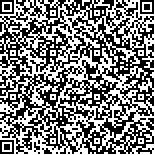| 本文已被:浏览 83次 下载 20次 |

码上扫一扫! |
|
|
| 针刺治疗轻中度阿尔茨海默病的Meta分析 |
|
于艺1,2, 朱征1,2, 王迎冬1,2, 章明星2, 席强2, 邱继文2, 李鑫举2, 任海燕2, 郭义2
|
|
1.天津中医药大学针灸推拿学院, 天津 301617;2.天津中医药大学实验针灸学研究中心, 天津 301617
|
|
| 摘要: |
| [目的] 运用Meta分析评估针刺治疗轻中度阿尔茨海默病的有效性和安全性。[方法] 检索中国知网、维普数据库、万方数据知识服务平台、中国生物医学文献数据库、PubMed、Cochrane Library、Web of science、EMbase,自建库至2024年1月5日发表的与针刺治疗阿尔茨海默病相关的文献。运用Cochrane协作网偏倚风险评估工具2.0版本(RoB 2.0)评价纳入文献质量,RevMan 5.3软件进行Meta分析,Stata 17.0软件进行偏倚风险分析,TSA 0.9软件进行试验序贯分析。[结果] 共纳入17项随机对照试验,包括1 103例轻中度阿尔茨海默病患者。干预措施包括手针、电针、温针。Meta分析结果表明,与对照组比较,针刺治疗能够改善患者的简易精神状态检查表(MMSE)评分[MD=1.92,95%置信区间(CI)(1.29,2.56),P<0.000 01]、阿尔茨海默病评定量表(ADAS-cog)评分[MD=-3.29, 95%CI(-3.96,-2.62),P<0.000 01]和阿尔茨海默病生命质量测评量表(QOL-AD)评分[MD=3.11,95%CI(2.11,4.12),P<0.000 01]。偏倚风险分析表明,发表偏倚可能性小(P=0.252)。试验序贯分析表明,纳入的研究病例数满足所需样本量,结果可靠。[结论] 针刺治疗轻中度阿尔茨海默病可以改善患者的认知功能和生活质量,未来需要更多的高质量随机对照试验进一步进行验证。 |
| 关键词: 针刺 阿尔茨海默病 Meta分析 试验序贯分析 |
| DOI:10.11656/j.issn.1673-9043.2025.01.10 |
| 分类号:R246.6 |
| 基金项目:载人航天工程航天医学实验领域项目(HYZHXM05006);国家重点研发计划项目(2022YFB4703104);中国工程院重大咨询项目(2019-ZD-6-03)。 |
|
| Meta-analysis of acupuncture for mild to moderate Alzheimer’s disease |
|
YU Yi1,2, ZHU Zheng1,2, WANG Yingdong1,2, ZHANG Mingxing2, XI Qiang2, QIU Jiwen2, LI Xinju2, REN Haiyan2, GUO Yi2
|
|
1.School of Acupuncture-Moxibustion and Tuina, Tianjin University of Traditional Chinese Medicine, Tianjin 301617, China;2.Research Center of Experimental Acupuncture Science, Tianjin University of Traditional Chinese Medicine, Tianjin 301617, China
|
| Abstract: |
| [Objective] To assess the efficacy and safety of acupuncture in the treatment of mild to moderate Alzheimer’s disease using meta-analysis. [Methods] Literature related to acupuncture for Alzheimer’s disease published from the establishment of the database to 5 January 2024 in CNKI,Wan Fang,VIP,China Biomedical Literature Database,PubMed,Cochrane Library,Web of science and EMbase was searched. The quality of the included literature was evaluated using RoB 2.0 tool,RevMan 5.3 software for meta-analysis,Stata 17.0 software for risk of bias analysis,and TSA 0.9 software for trial sequential analysis. [Results] A total of 17 randomised controlled trials including 1 103 patients with mild-to-moderate Alzheimer’s disease were included. Interventions included manual acupuncture,electroacupuncture,and warm acupuncture. The results of the meta-analysis showed that compared with control group,acupuncture treatment significantly improved patients’ MMSE score[MD=1.92, 95%CI(1.29,2.56),P<0.000 01],ADAS-cog score[MD=-3.29,95%CI(-3.96,-2.62),P<0.000 01] and QOL-AD score[MD=2.97,95%CI(1.49,4.44),P<0.000 1]. Risk of bias analysis indicated a low likelihood of publication bias(P=0.252). Trial sequential analysis showed that the number of cases in the included studies met the required sample size and the results were reliable. [Conclusion] Acupuncture for mild-to-moderate Alzheimer’s disease can significantly improvepatients’ cognitive function and quality of life,and more high-quality randomised controlled trials are needed to further validate this in the future. |
| Key words: acupuncture Alzheimer’s disease meta-analysis trial sequential analysis |
